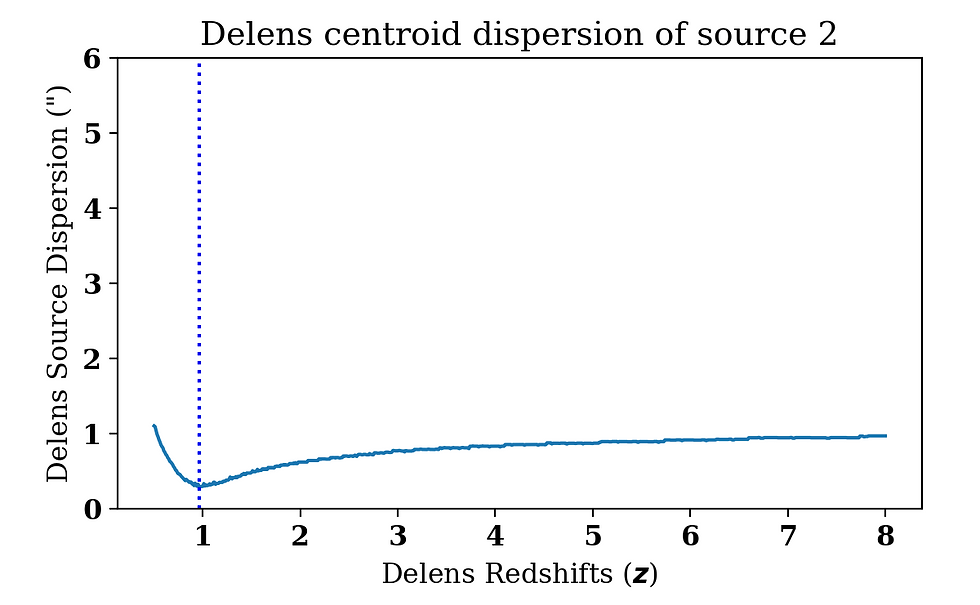Cheshire Cat 1 nfw model with geo-z system
- jackychc
- Jul 19, 2019
- 2 min read
Glafic is still used in this model, with 1 nfw, mass, position, ellipticity and PA are free parameters. Two jaffe profiles are used to represent LTM, mass, truncation and core radius are free parameter.
There are four layers. NFW, 2 jaffe and all other cluster members. cluster members used are similar to previous model.
Apart from spectral-z lensed images, previously identified other lensed images are also used in producing this model.

Redshift used are spec-z, however, since E,G,Z has no spec-z data, I allow glafic to fit the best redshift.
A1, A2, A3 with z=2.198
B1a, B1b with z=0.9657
B2a, B2b with z=0.9657
B3a, B3b with z=0.9657
C1a, C1b with z=2.783
C2a, C2b with z=2.783
E1, E2, E3 with z=2.2963
G1,G2,G3 with z = 2.2806
Z1,Z2 with z=1.2223
Resulting mass profile :
Black/white : 1100nm HST image ; colour contour : mass blue 0.1% of peak value, then 0.3%, 0.5%, 0.7%, 1%, 1.3%, 2%

Critical curve for system A:
cool-warm color : 1600nm HST image, black line : critical curve

Delens-relens result:
left : delens-relens result. right : data
Delens relens of A1 (top image):
Produce only one counterimage along the arc.

Delens relens of A2, the middle image:
produce two counterimages along the arc as expected, but the position of the top image is further than data.

Delens relens of A3, the lower image:
produce two counterimages along the arc as expected, but the position of the top image is further than data.

source plane dispersion at spec-z 2.198 is 0.1953 arcsec.
While geo-z = 2.15 , source plane dispersion at geo-z is 0.177arcsec

_____________________________________________________________________________
System B:
Critical curve:

delens relens left part of the arc:

delens relens right lower part of the arc:

delens relens right upper part of the arc:

The delens relens result is as expected.
Source dispersion is 0.18 arcsec, with geo-z the same as spec-z.

_____________________________________________________________________________
System C:
Critical curve:

Delens relens of the bright spot in the right : would produce counterimage in the top left as expected.

Delens relens of the top left counterimage : would produce counterimage in the arc as expected.

Delens relens of two other lensed images are also satisfactory


Source dispersion is 0.028 arcsec and 0.112 arcsec respectively with spec-z 2.783
the geo-z is 2.72. good agreement with spec-z

_____________________________________________________________________________
System E:
Critical curve:

Delens-relens result are following:
delens relens of the upper arc segment is good


However, delens-relens of the lower arc segment produce 2 extra arc.

Source dispersion is 0.128 arcsec with geo-z of 2.32.

_____________________________________________________________________________
System G:
Critical curve:
redshift : 2.28

Delens-relens:
of lower lensed image: produce an acceptable positional agreement with data

the middle lensed image: the worst system

the top lensed image, acceptable positional agreement.

source dispersion : 0.232 arcsec at glafic-fitted redshift 2.28, geo-z is 2.18 dispersion of 0.21 arcsec.

_____________________________________________________________________________
System Z:
Critical curve:

Delens relens of both images shows good positional agreement.


source dispersion is 0.08 arcsec, the glafic redshift is similar to geo-z 1.223

Comments: System A and E has major positional disagreement. let's see if the 2 nfw model can help improve this
Next update : 2nfw model.



Comentarios